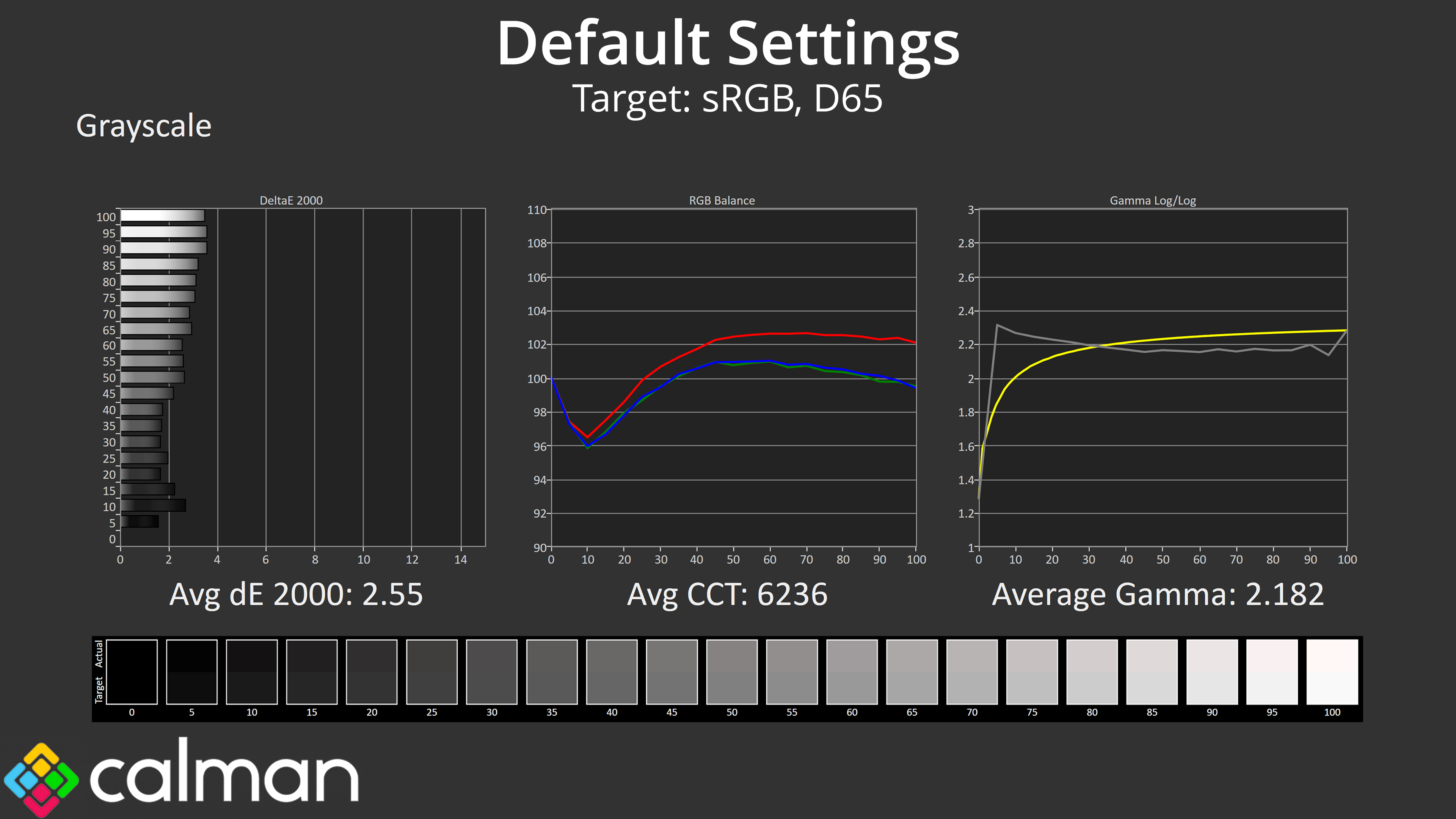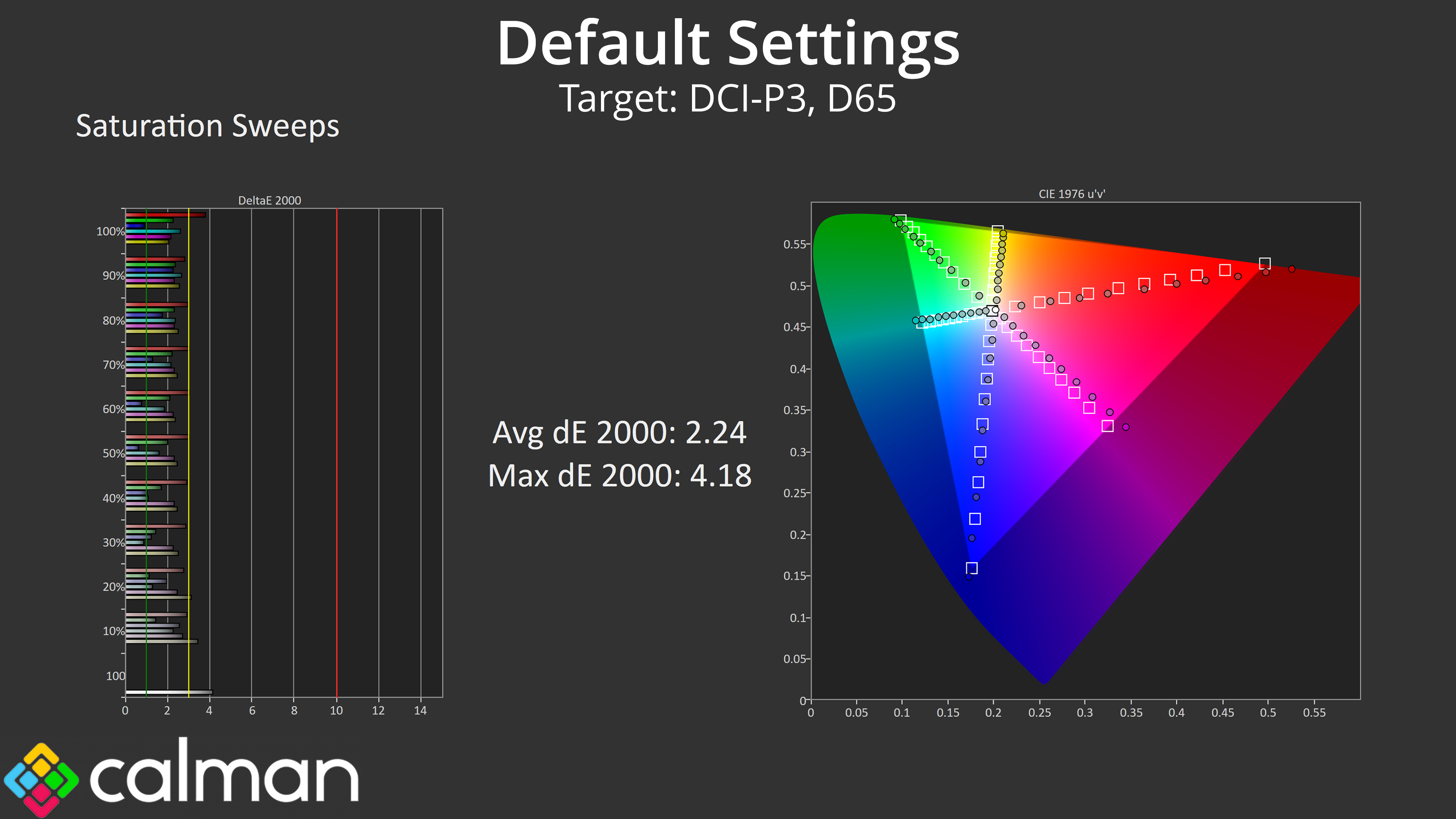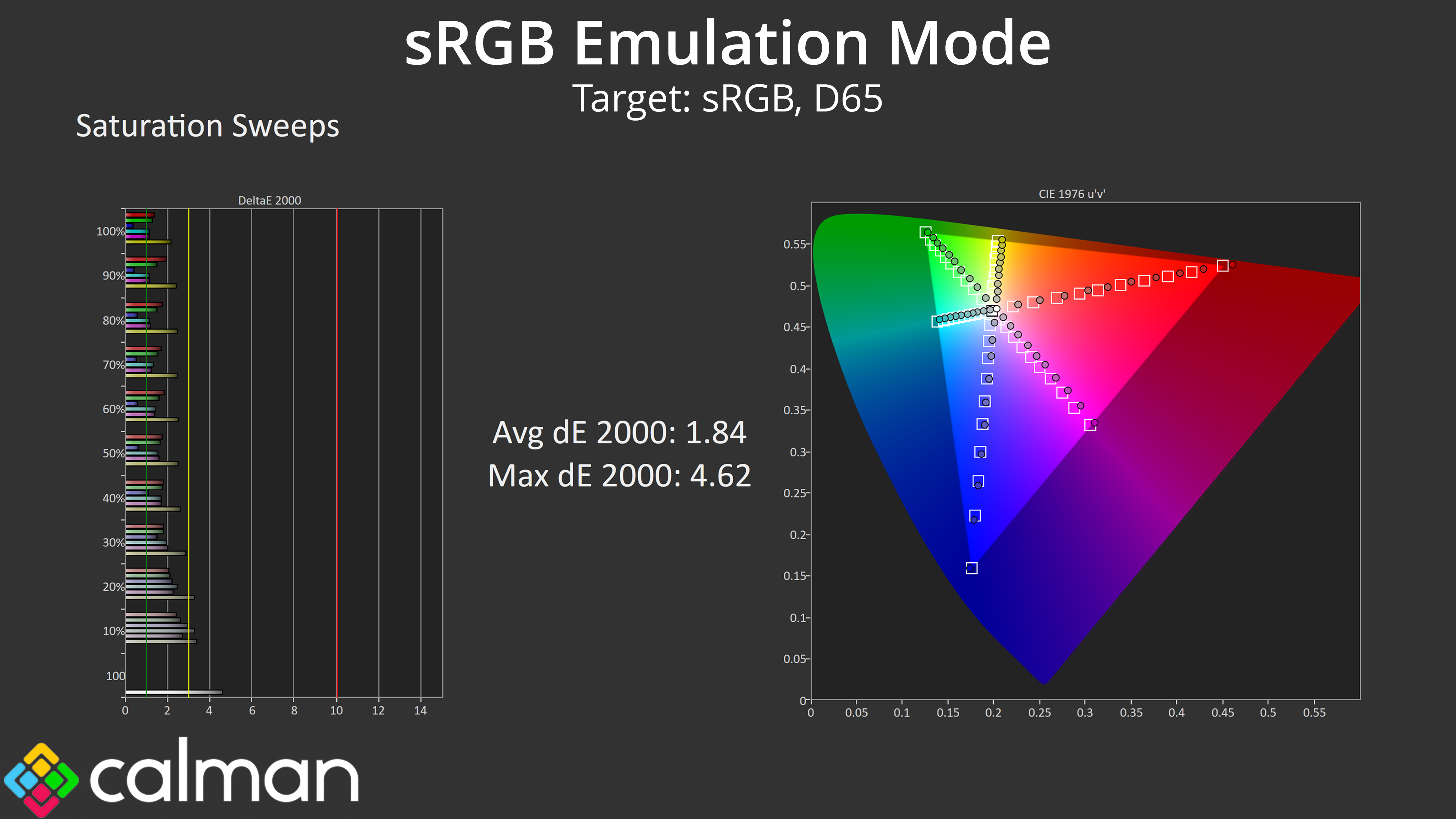Our main test involves using an X-Rite i1 Display Pro Plus colorimeter and utilising Portrait Display's Calman Ultimate software. The device sits on top of the screen while the software generates colour tones and patterns, which it compares against predetermined values to work out how accurate the screen is.
The results show:
- A monitor’s maximum brightness in candelas or cd/m2 at various levels set in the OSD.
- A monitor’s contrast ratio at various brightness levels in the OSD.
- Gamut coverage, primarily focusing on sRGB and DCI-P3 colour spaces.
- Greyscale accuracy, measured across 20 shades, with an average colour balance reported.
- The exact gamma levels, with a comparison against preset settings in the OSD.
- The colour accuracy, expressed as a Delta E ratio, with a result under 3 being fine for normal use, and under 2 being great for colour-accurate design work.
We first run these tests with the display in its out-of-the-box state, with all settings on default. If there is an sRGB emulation option or other useful mode then we may test that too. We then calibrate the screen using the Calman Ultimate software and run the tests again.
You can read more about our test methodology HERE.
Default settings
Brightness and Contrast (Full Screen)
| OSD Brightness | White Luminance (cd/m2) | Black Luminance (cd/m2) | Contrast Ratio |
| 0% | 13 | 0.0 | ~Infinite |
| 25% | 74.2 | 0.0 | ~Infinite |
| 50% | 135.3 | 0.0 | ~Infinite |
| 75% | 196.1 | 0.0 | ~Infinite |
| 100% | 256.3 | 0.0 | ~Infinite |
In terms of the brightness range, it's typical of a Samsung QD-OLED. We find a minimum of just 13 nits, and then a maximum of 256 nits for a full-screen white. Contrast is effectively infinite due to the OLED technology.
Brightness also holds steady regardless of APL when in SDR, and this is thanks to the Brightness Stabilizer mode that is enabled by default. This means brightness is consistent whatever content you are viewing and won't vary depending on what's on screen.
You can also disable Brightness Stabilizer and that results in higher brightness levels for smaller window sizes, but you will also notice the screen brightening and dimming depending what is being displayed.
Gamut (CIE 1976)
| Colour space | Coverage (%) |
| sRGB | 140.8 |
| DCI-P3 | 99.3 |
| Adobe RGB | 96.7 |
| Rec.2020 | 81.7 |
As for gamut, we can see coverage far exceeding the sRGB space, hitting a whopping 140.8% coverage, but then delivering 99.3% DCI-P3, 96.7% Adobe RGB and 81.7% reporting of the Rec.2020 colour space. This is all typical of a QD-OLED screen.
Greyscale
Moving onto greyscale, performance is generally fine out of the box, but not quite perfect. Colour balance is just a touch warm, with an average CCT (Correlated Colour Temperature) of 6236K, but that's only a 4% deviation from the 6500K target. Gamma is generally pretty accurate too, averaging 2.18, but is just a little too high for the dark shades, and then a little too low for the brighter shades, but we're talking small margins here.
With just a few tweaks I was able to dial in a more accurate colour balance, with the Red channel set to 94, the Green channel at 97, and the Blue channel at 100. That improved the average greyscale dE 2000 from 2.55 to 1.6.
Saturation
As we'd expect from such a wide gamut display, we see high levels of over-saturation relative to the sRGB space, resulting in an average dE 2000 of 4.34. When plotted against the wider DCI-P3 space however, accuracy is improved, with a new average dE of 2.24.
Colour Accuracy
It's a similar trend for colour accuracy. Due to high levels of over-saturation, out of the box colour accuracy is poor for the sRGB space, averaging a dE 2000 of 5.2. Things do pick up to an average dE of 2.89 when mapping against the DCI-P3 space however, though there's still room for improvement.
sRGB Emulation Mode
Corsair does include an sRGB mode within the OSD, and this does a good job at clamping the gamut to avoid over-saturation.
Greyscale performance is similar to the standard mode, though I'd say the gamma curve is actually slightly worse, dipping even lower in the brighter shades and averaging 2.11, compared to 2.18 as we saw previously.
Saturation accuracy is greatly improved though, with a new average dE 2000 of 1.84, down from 4.34 using the default settings.
Likewise, colour accuracy dEs have dropped across the board, and we get a new average figure of 1.9, down from 5.2 using out of the box settings.
The only other thing to mention with the sRGB mode is that, for some reason, on firmware V102 enabling the mode automatically reduces the panel sharpness setting to 0, and it cannot be adjusted. This results in a relatively blurry image, given the default setting is with sharpness at 7. I've reached out to Corsair about this and I've been told a firmware update is coming which will fix this, but at the time of writing it hasn't arrived yet.
Calibrated Results
I did also do a full manual calibration using Calman Ultimate and it's no surprise to see the results are phenomenal. Greyscale performance is basically flawless now with near-perfect gamma tracking, and then saturation and colour accuracy performance also see the average dEs drop below 1.
 KitGuru KitGuru.net – Tech News | Hardware News | Hardware Reviews | IOS | Mobile | Gaming | Graphics Cards
KitGuru KitGuru.net – Tech News | Hardware News | Hardware Reviews | IOS | Mobile | Gaming | Graphics Cards





















